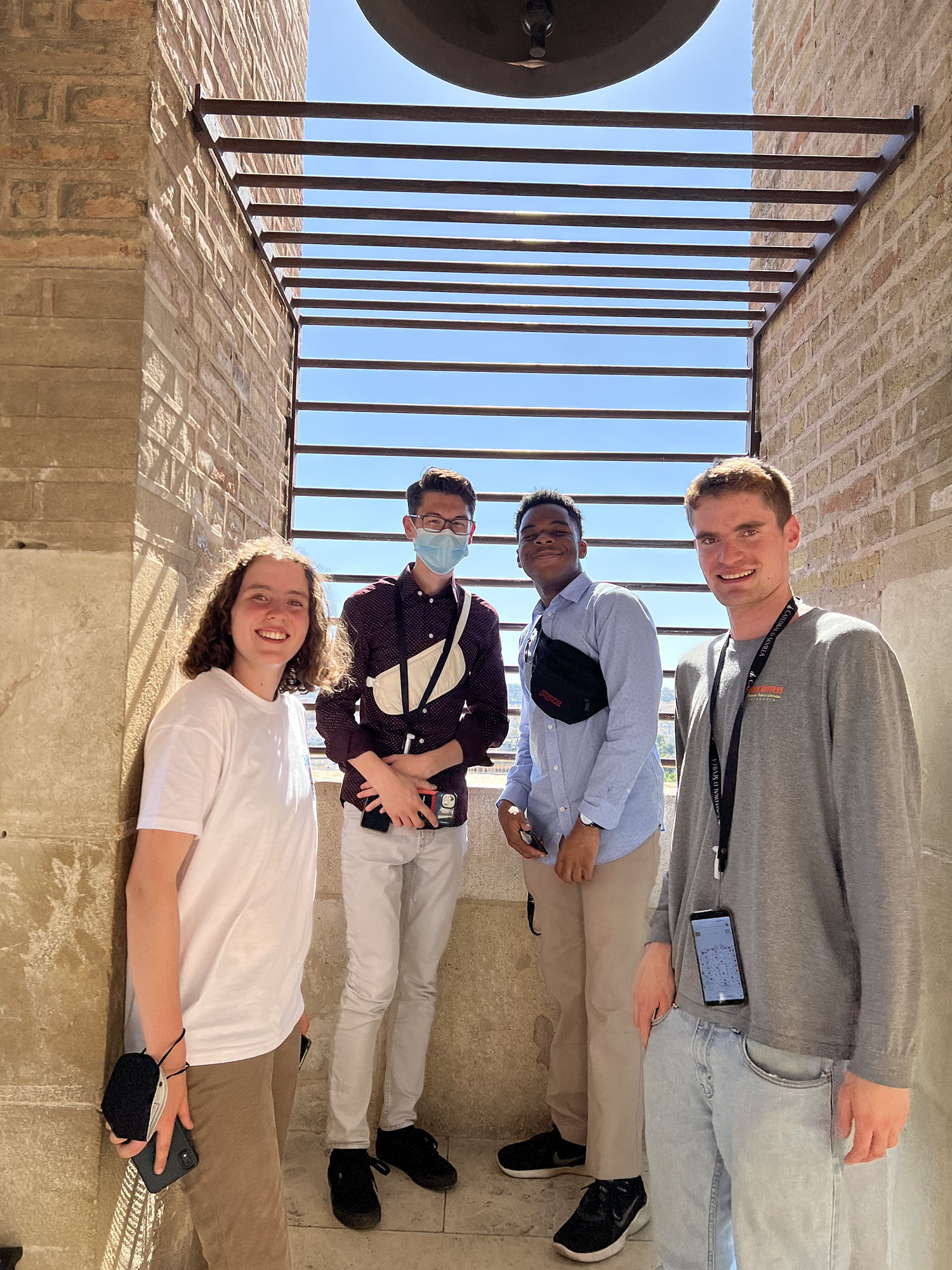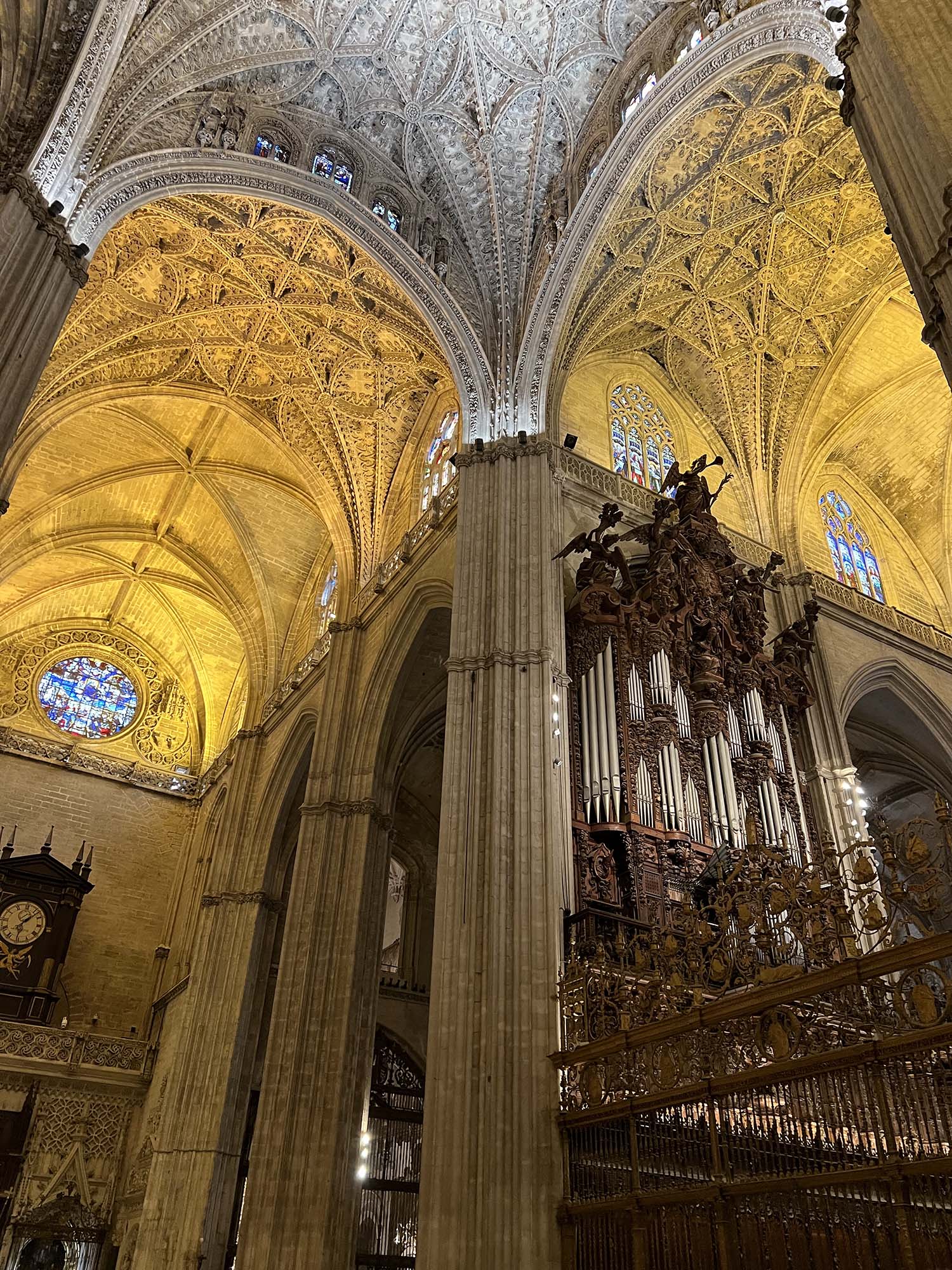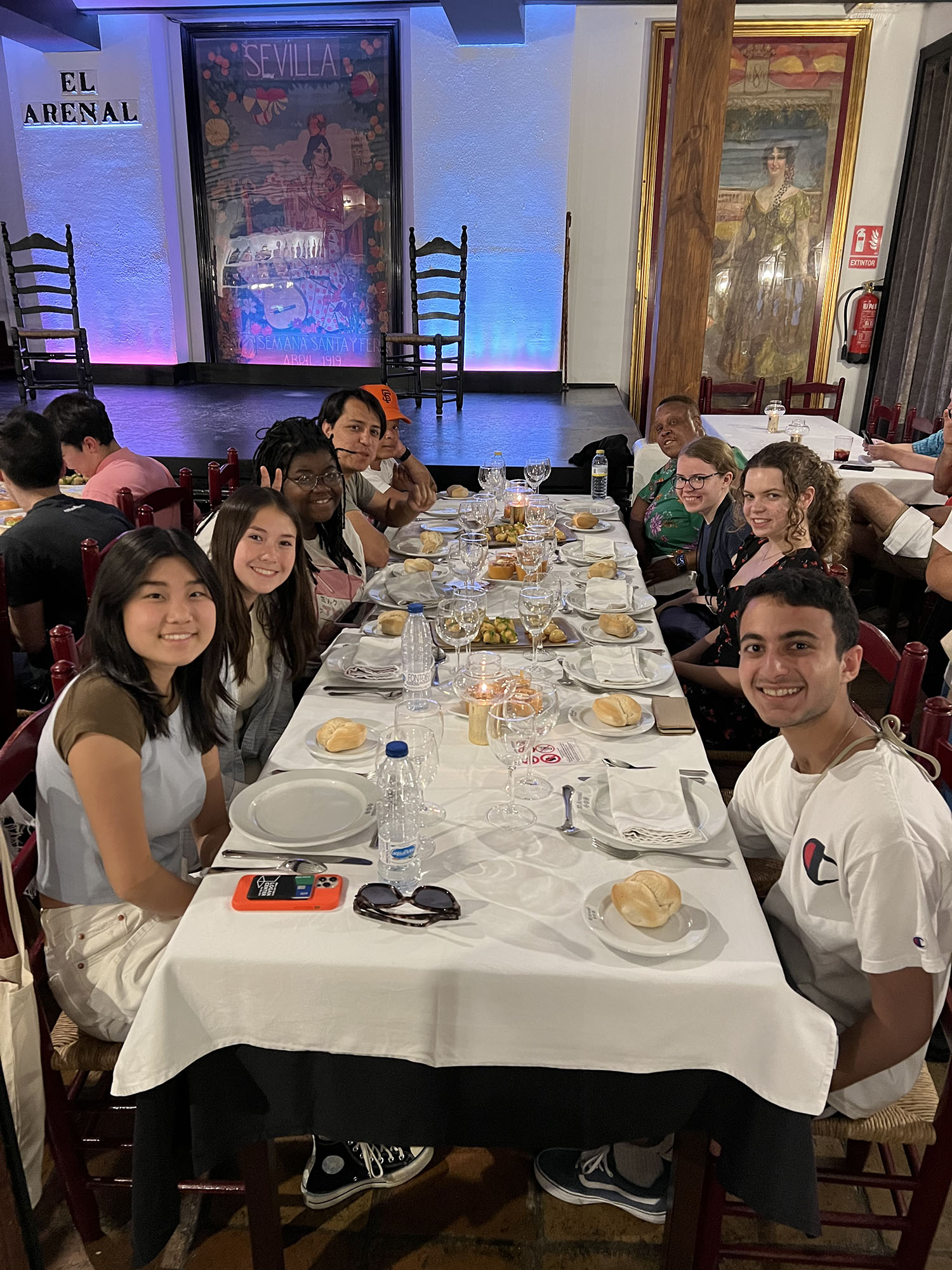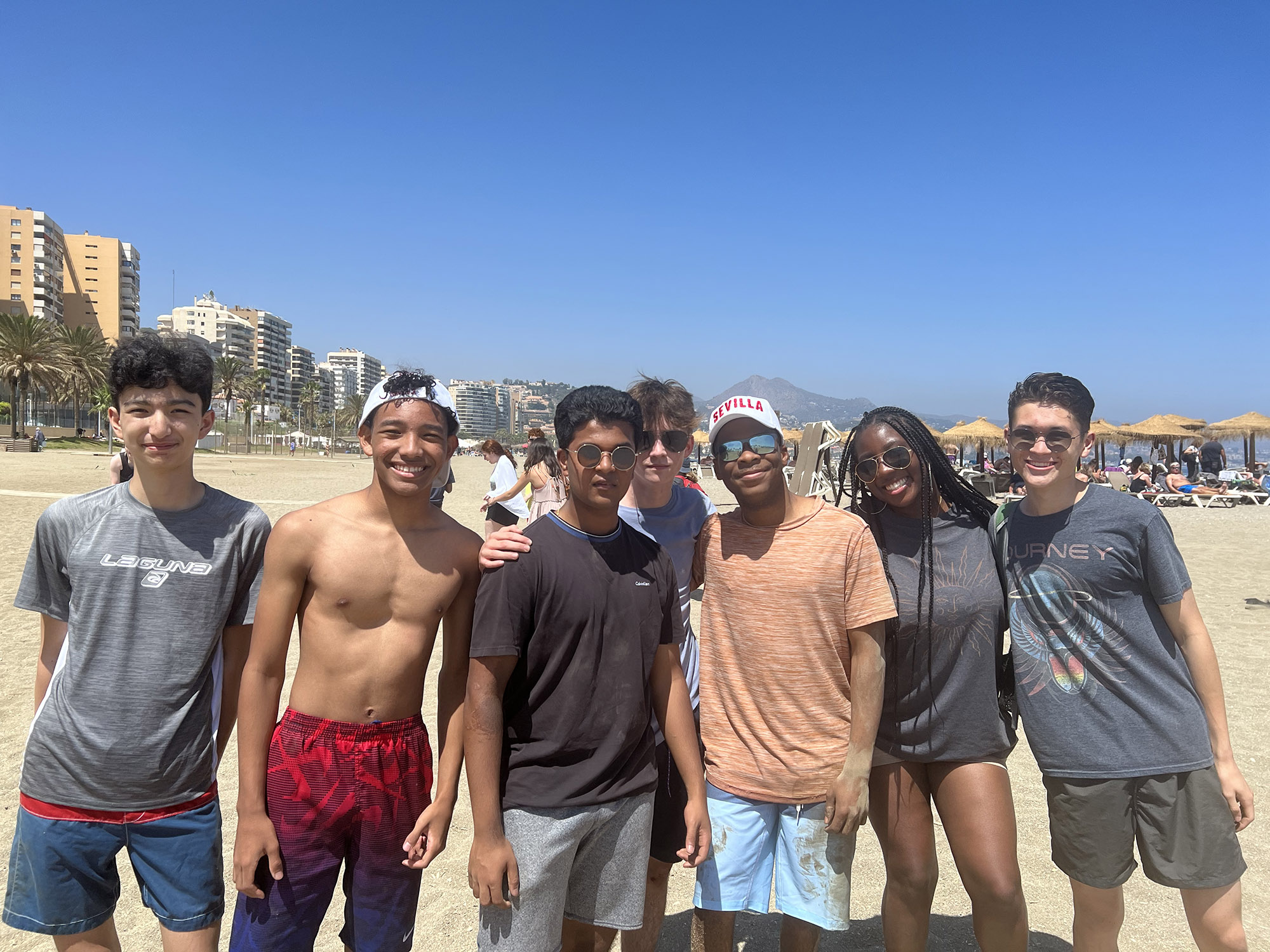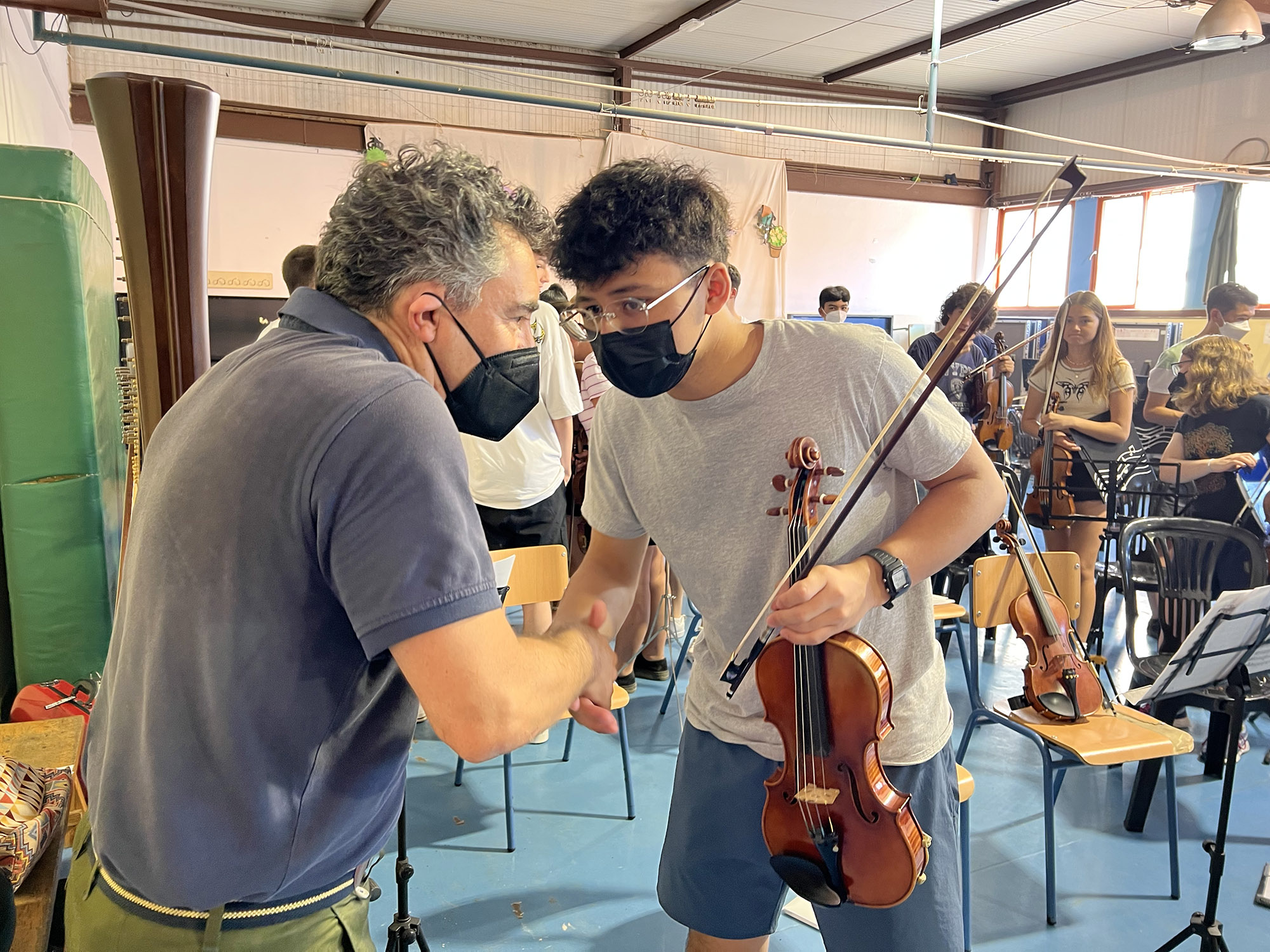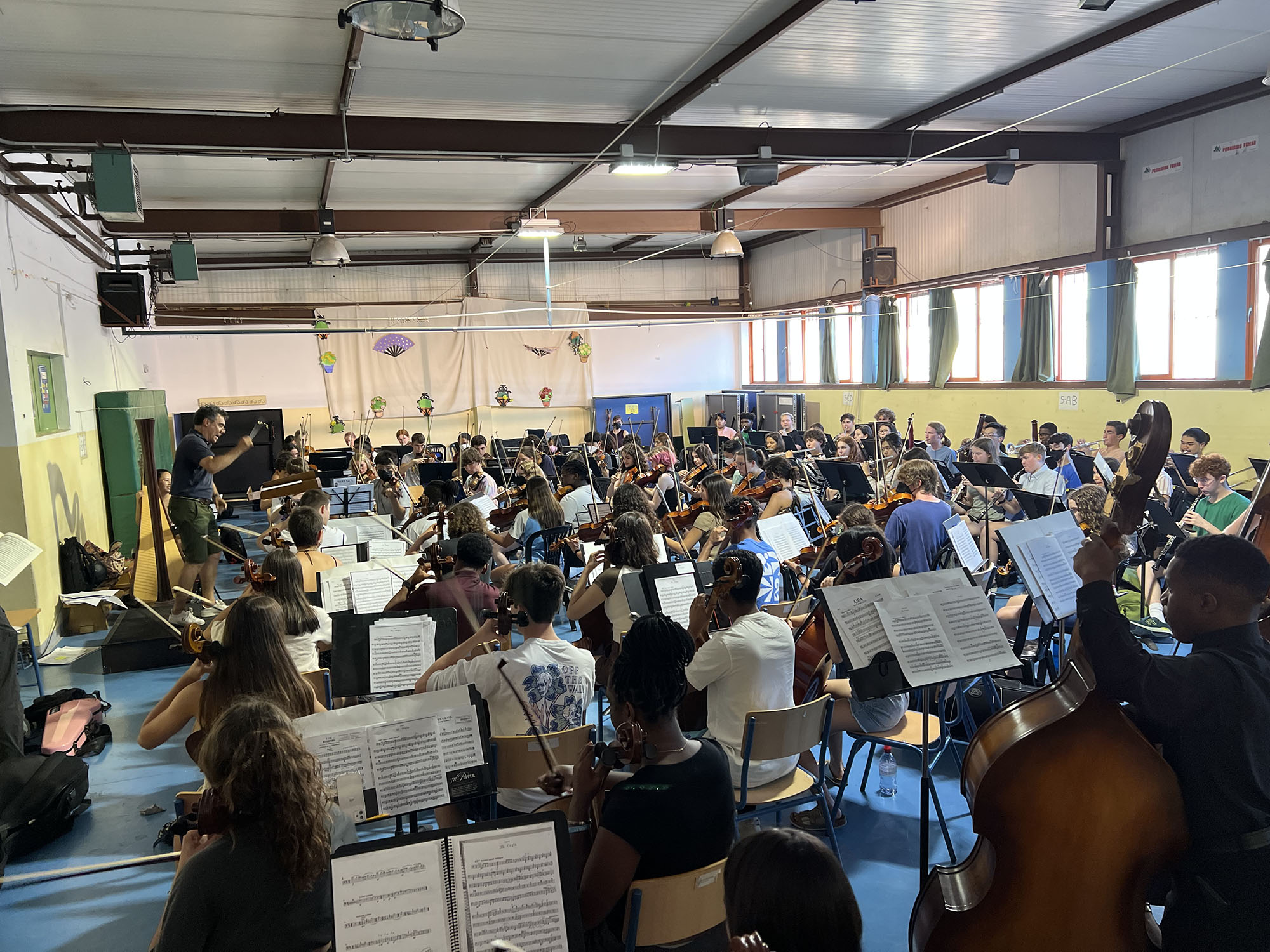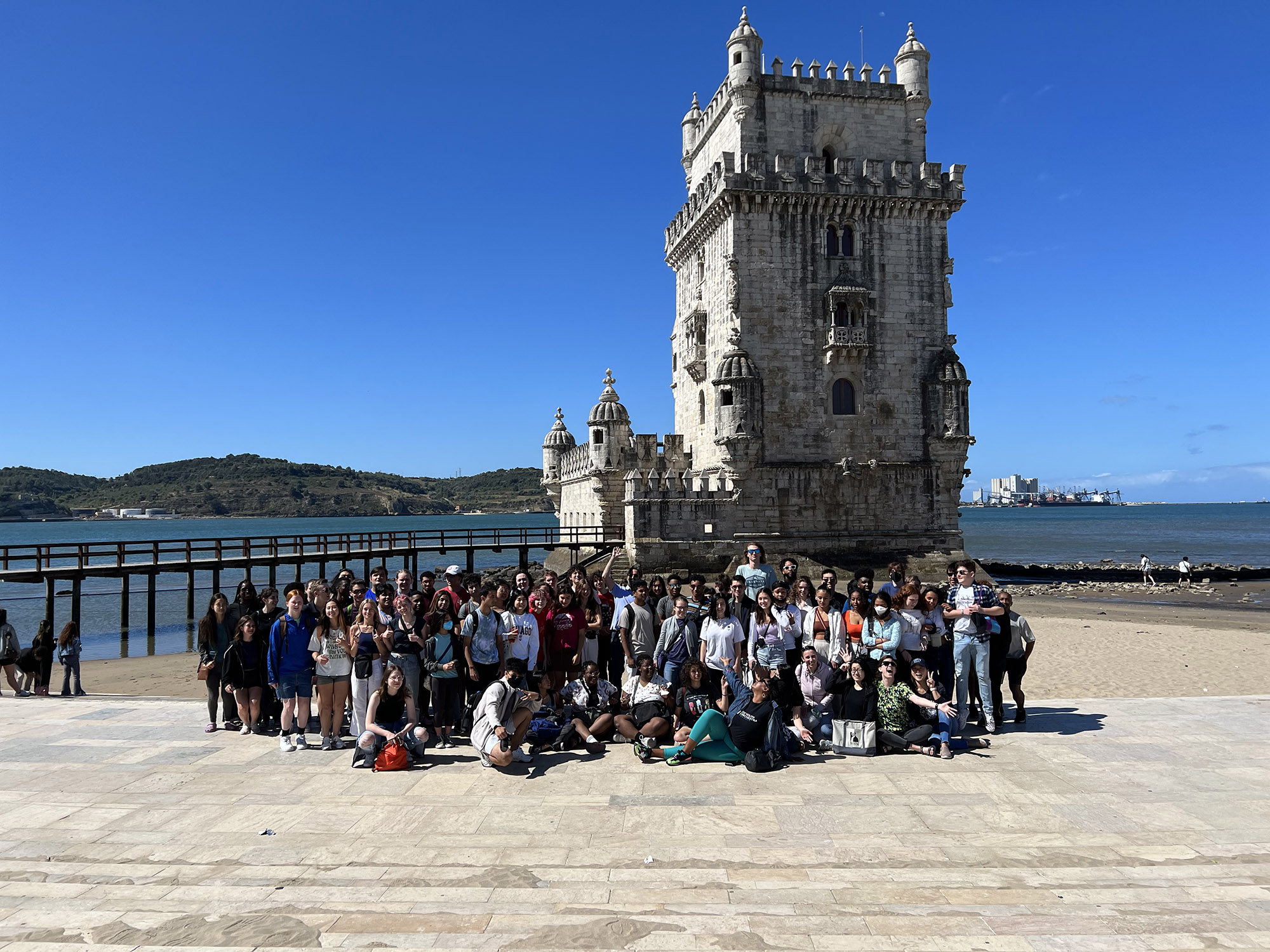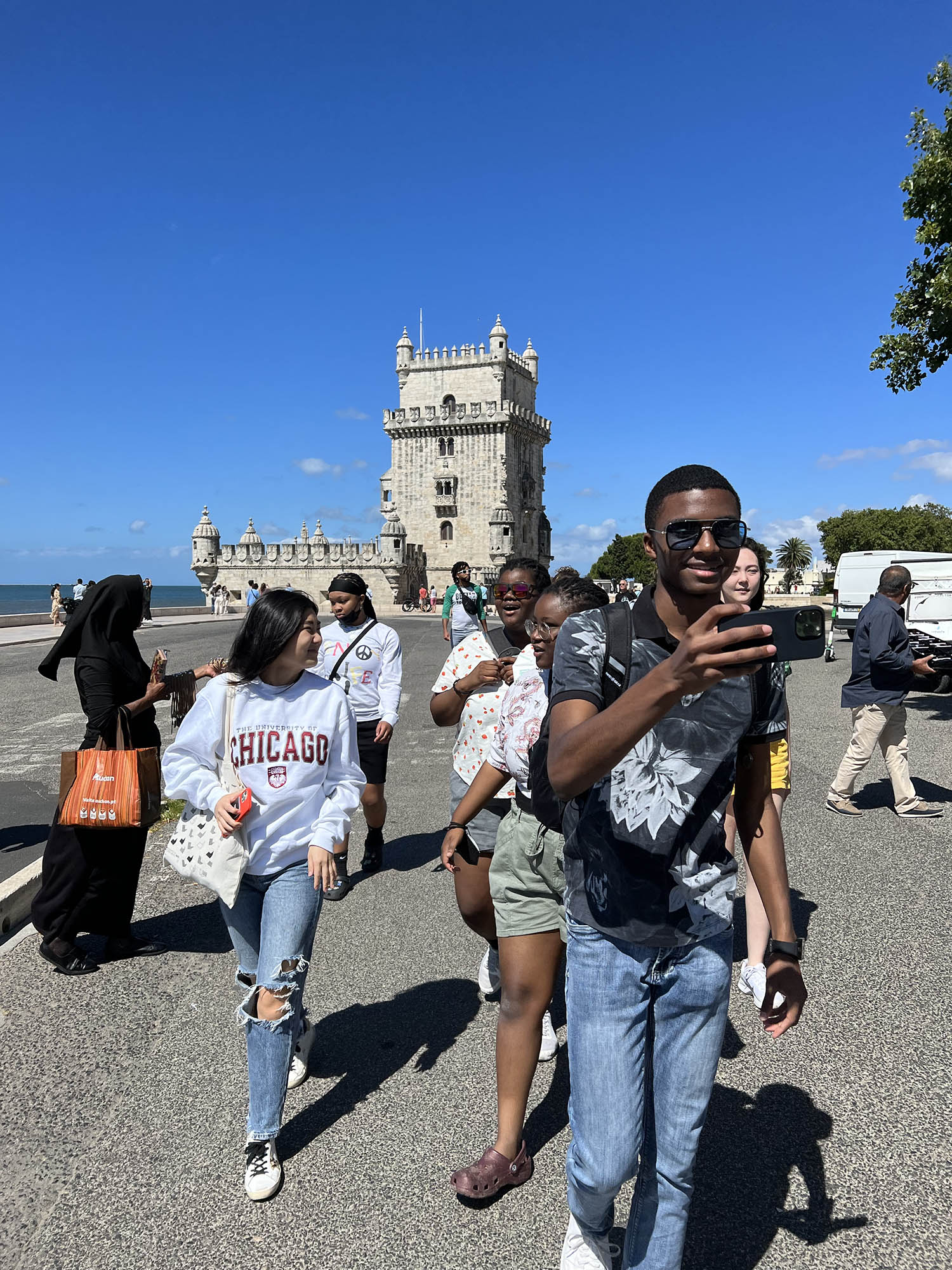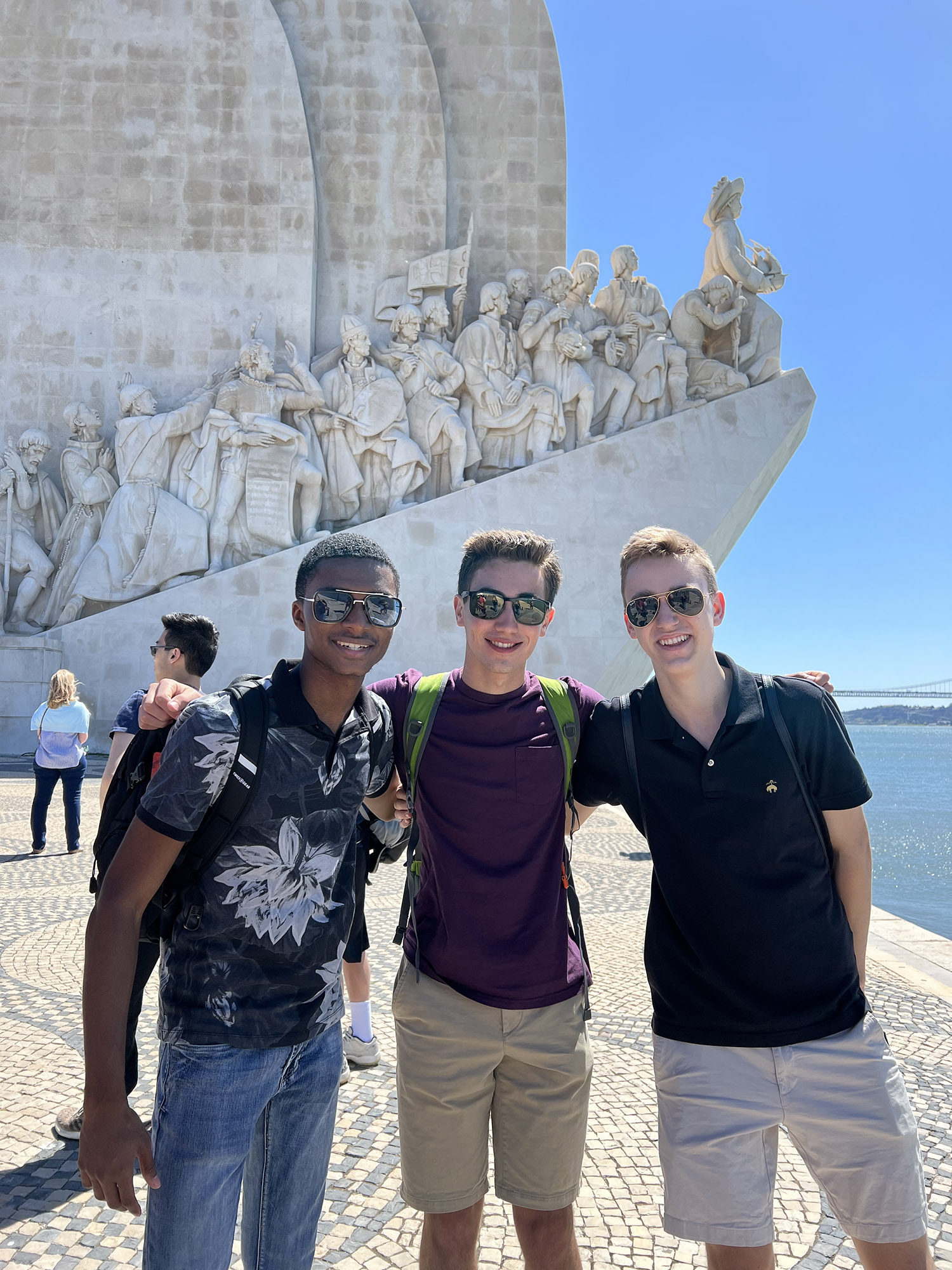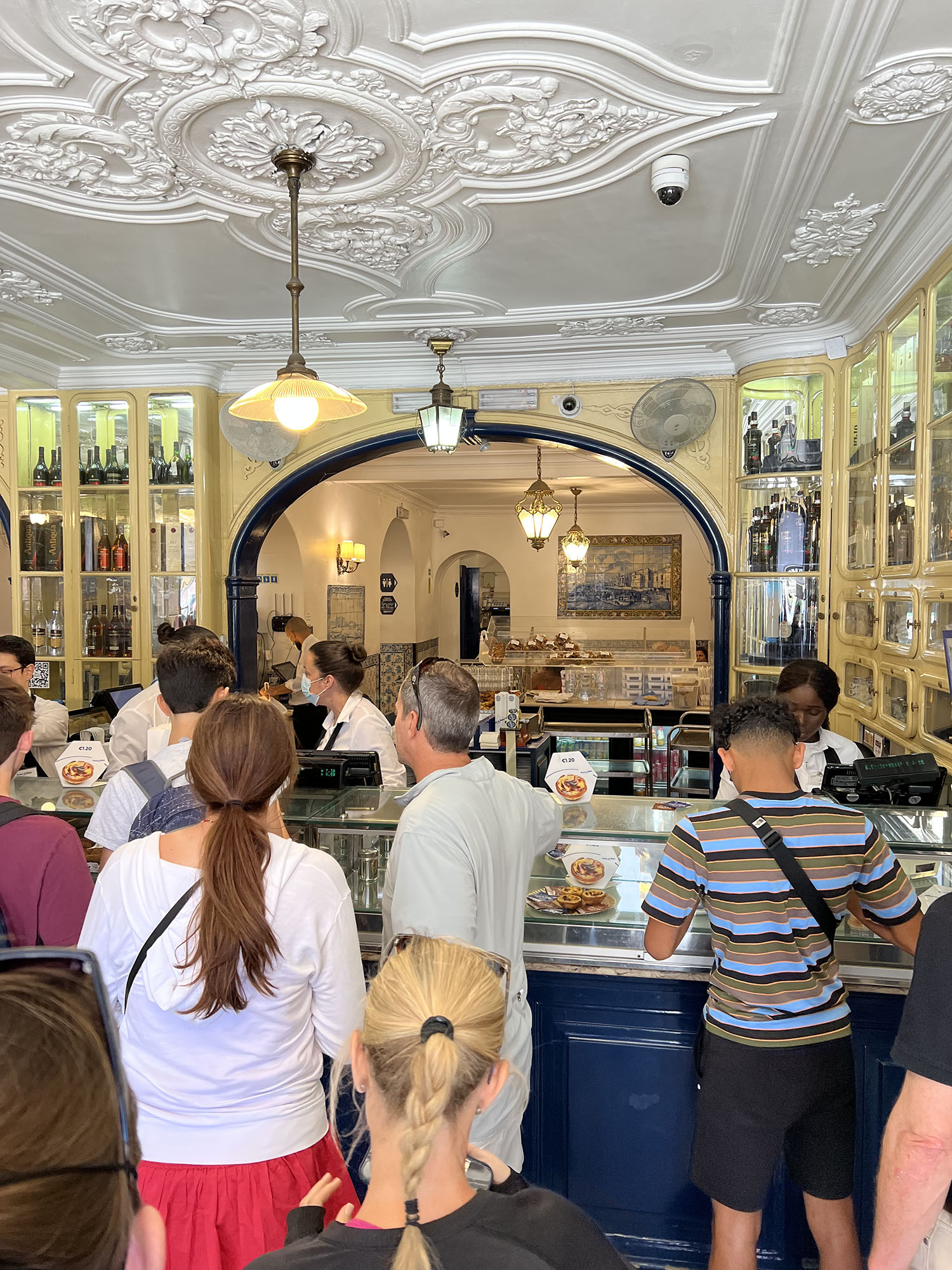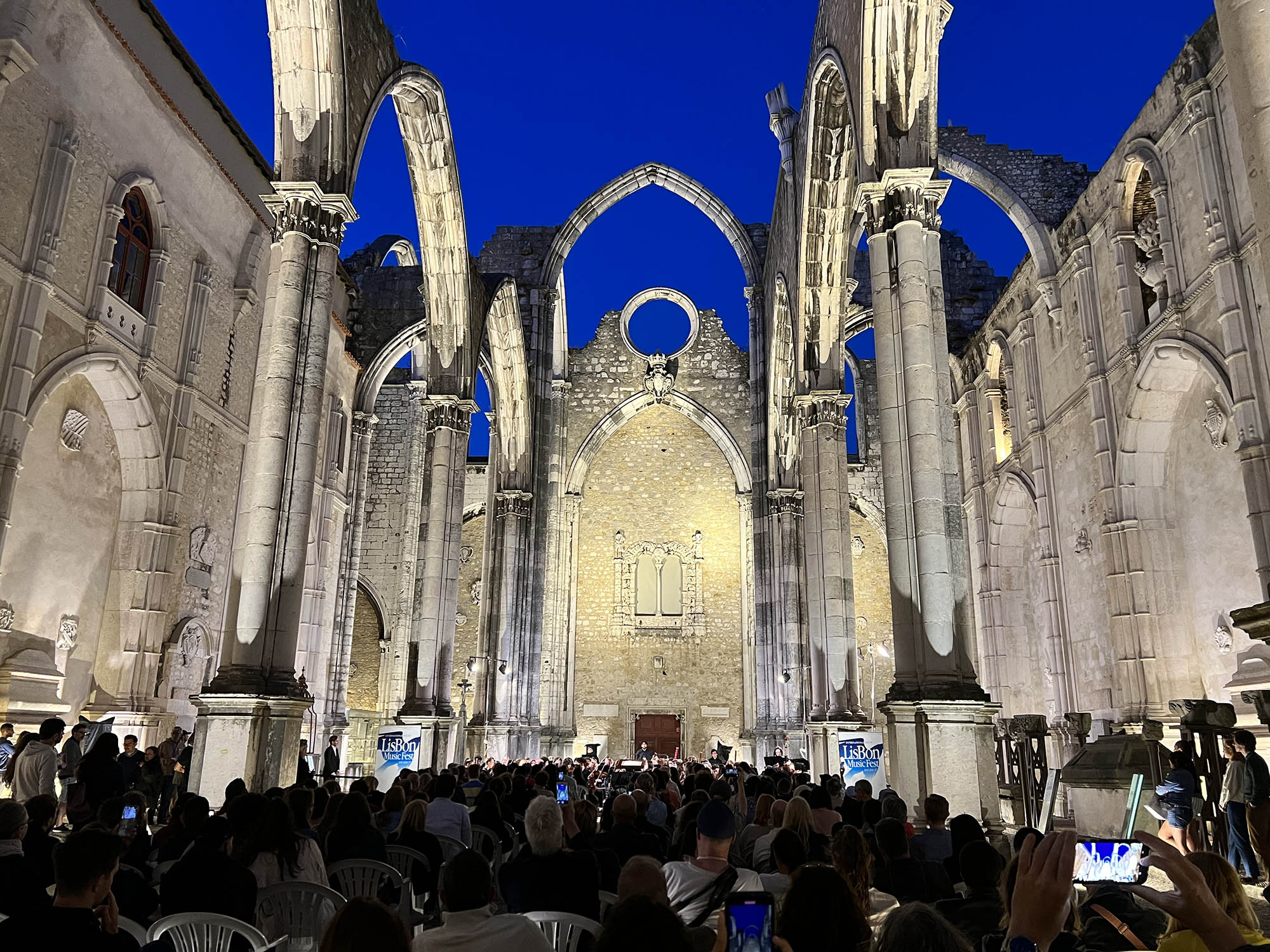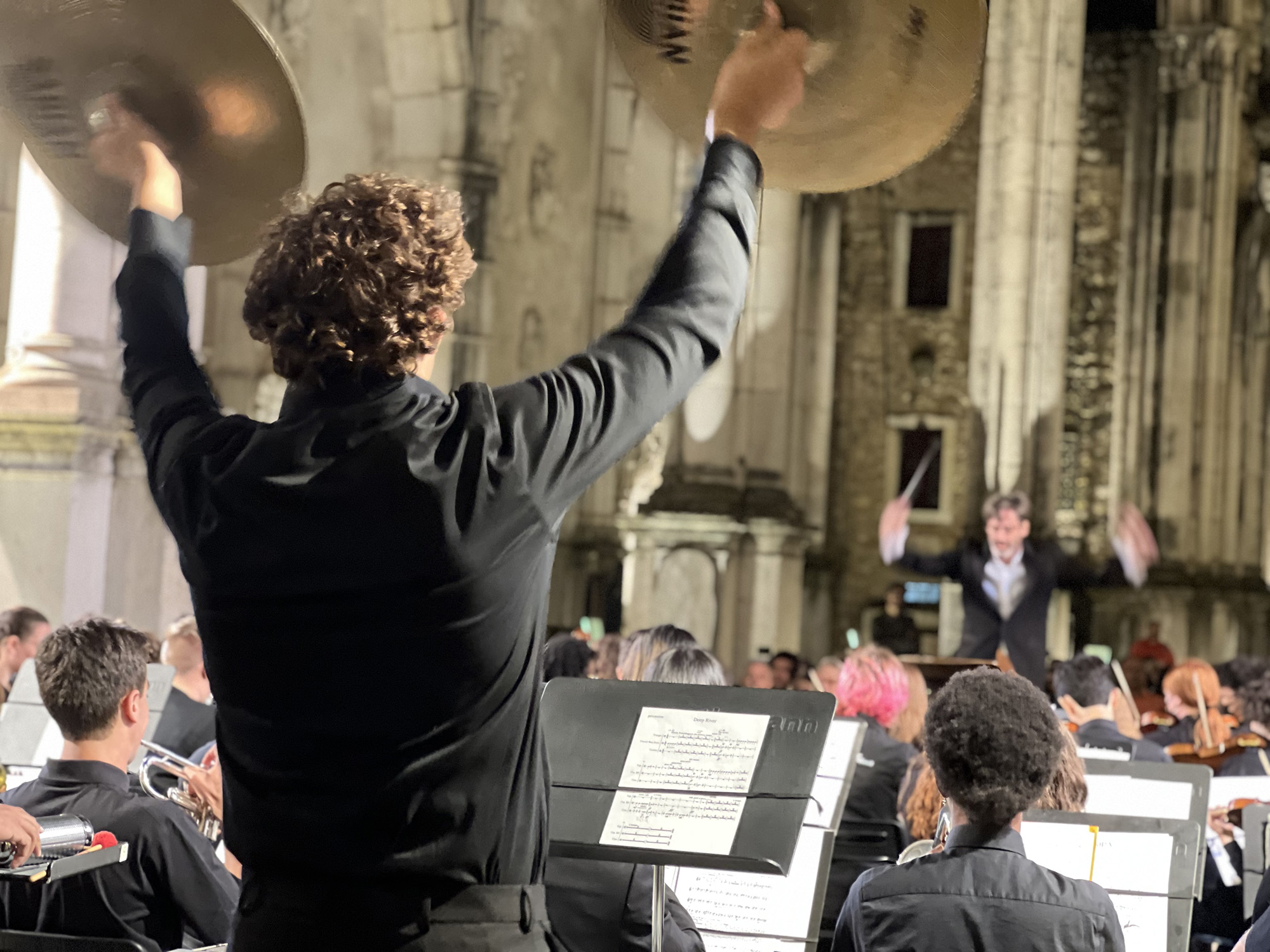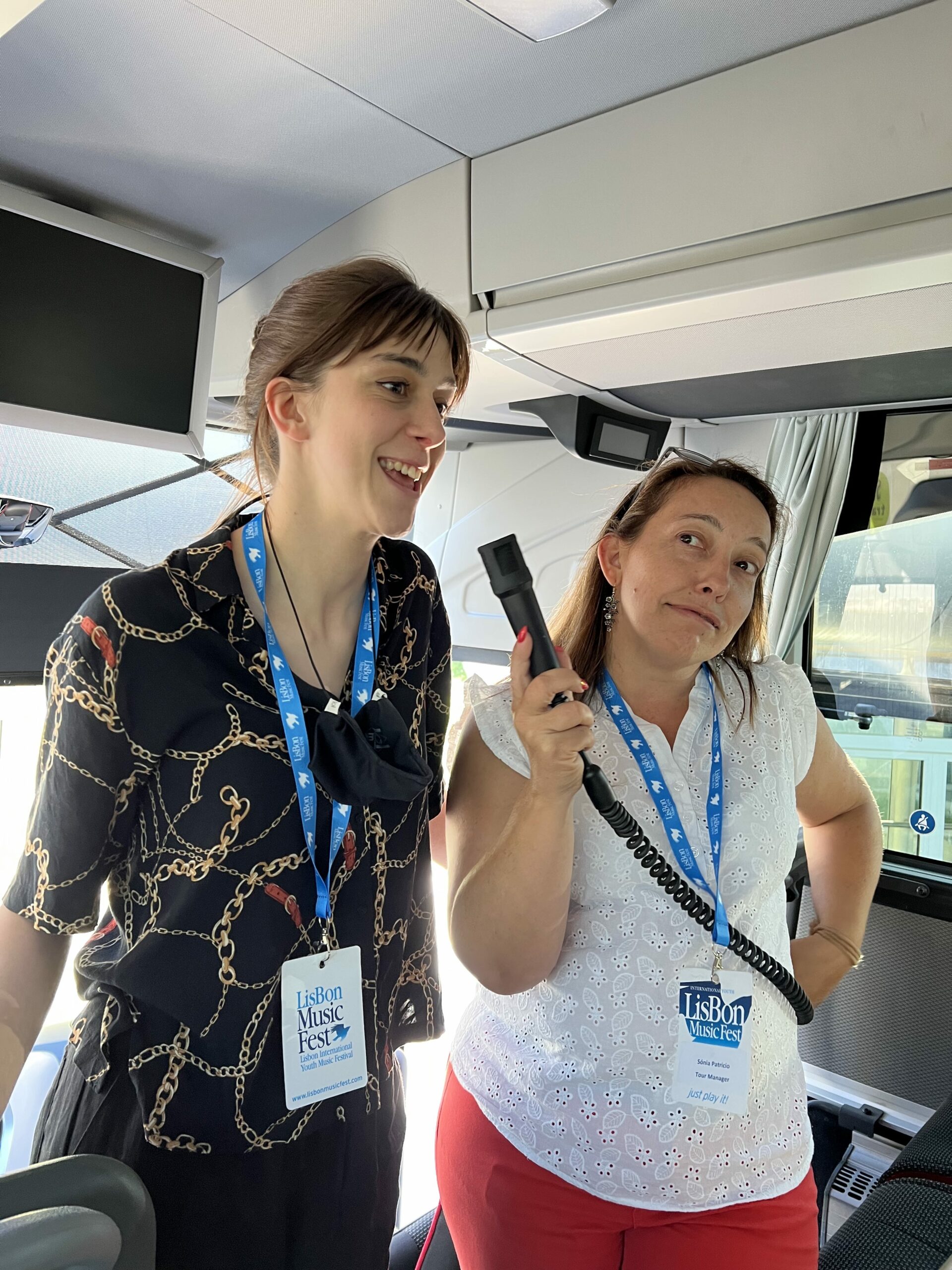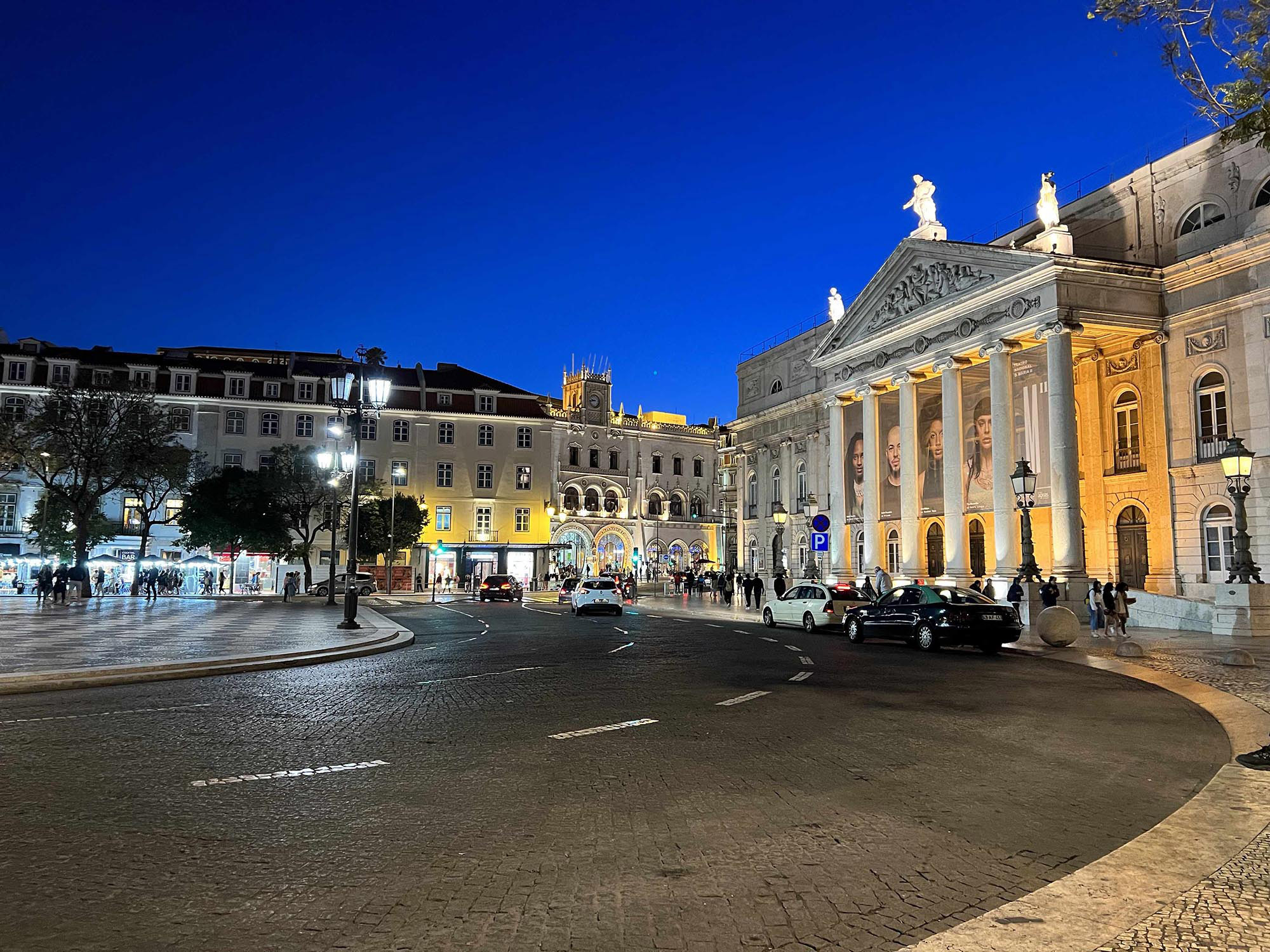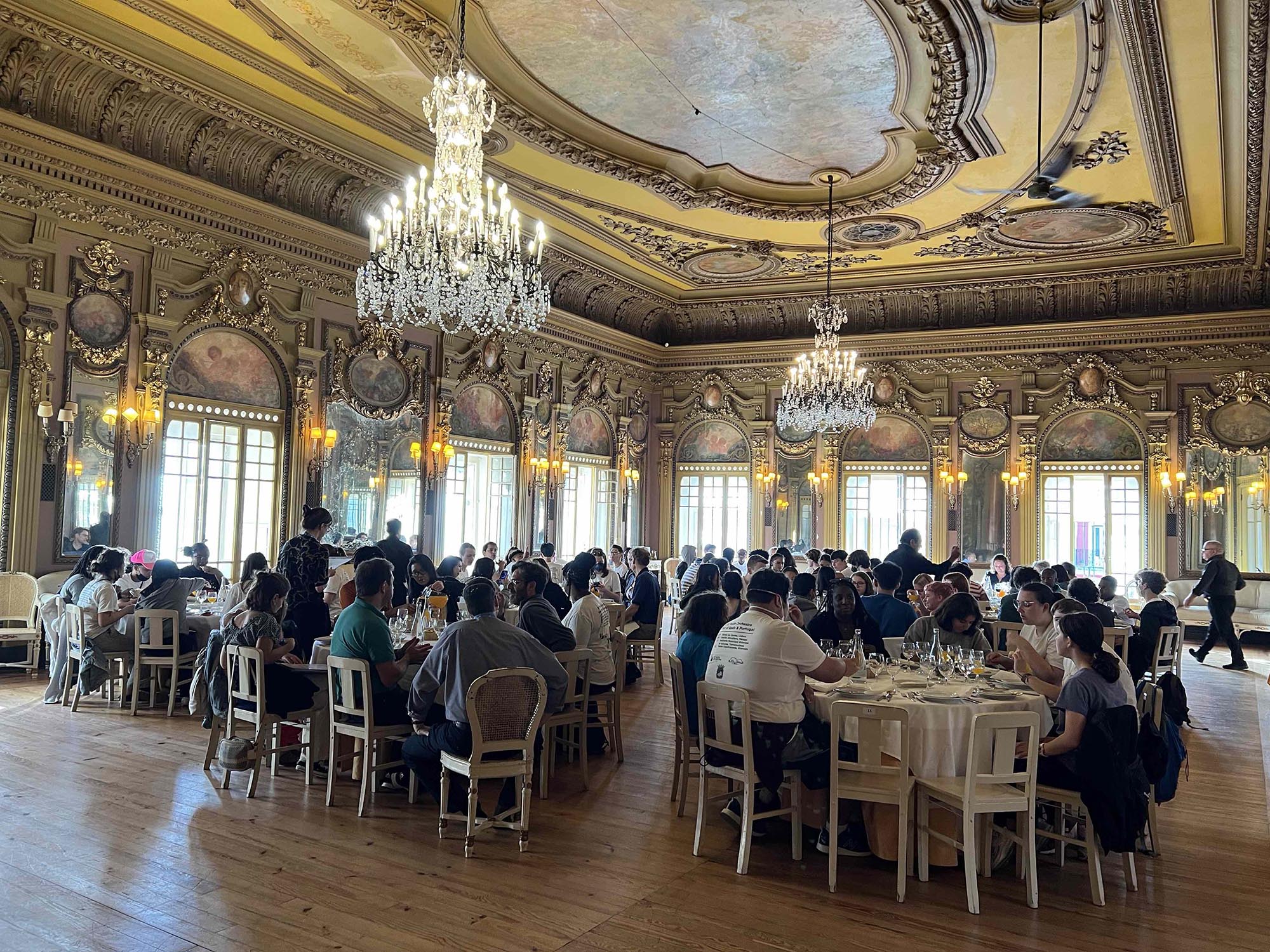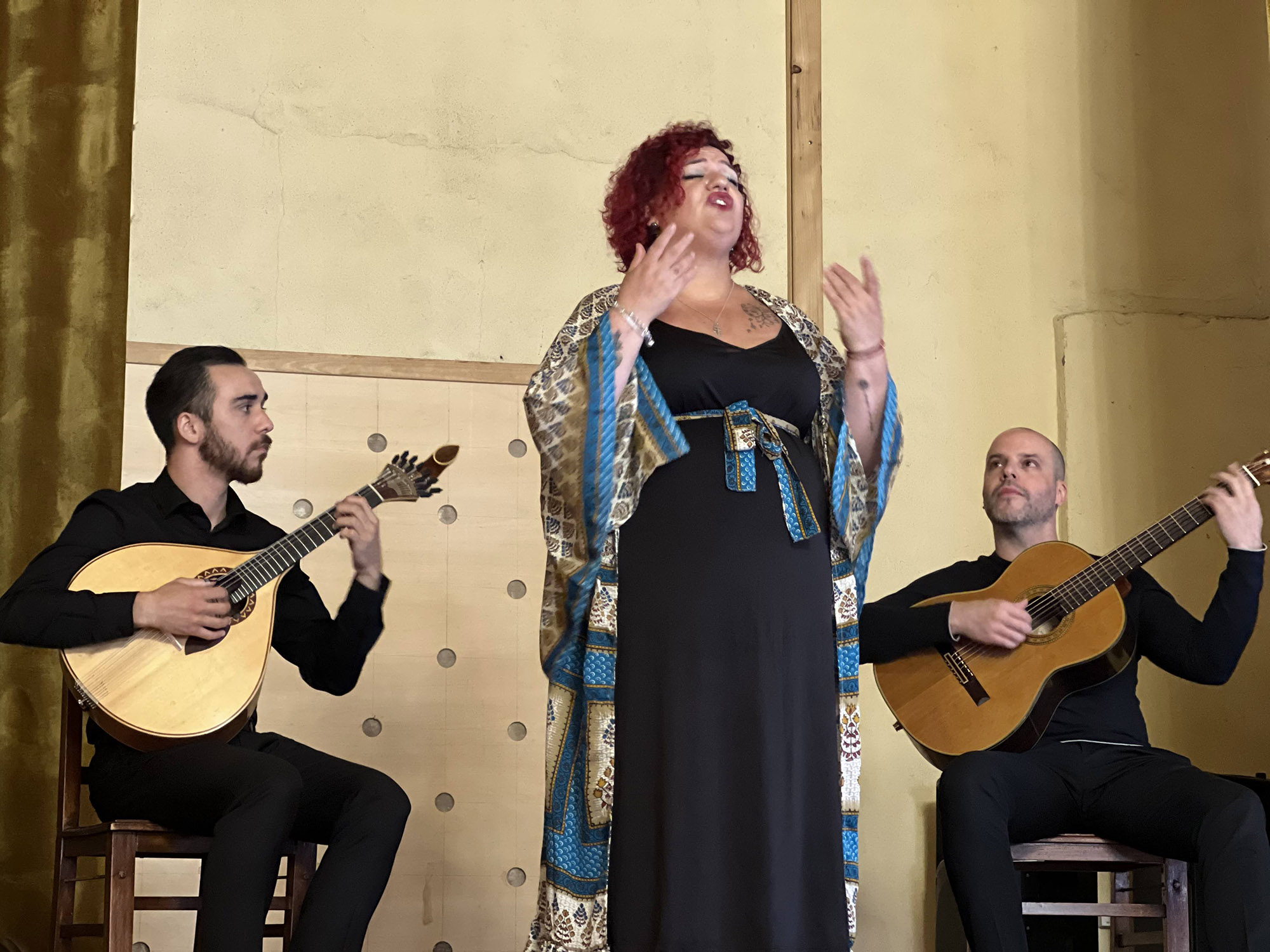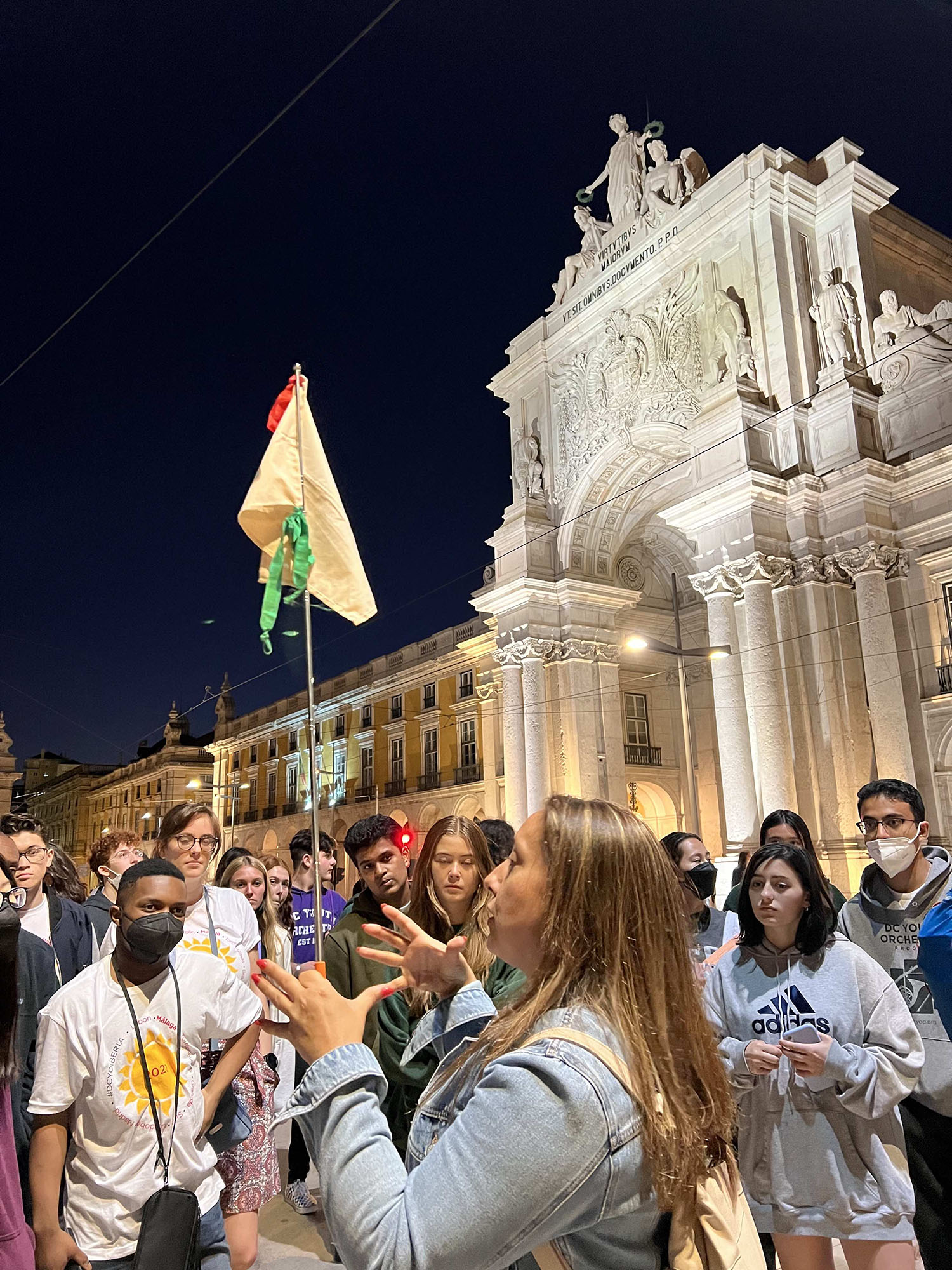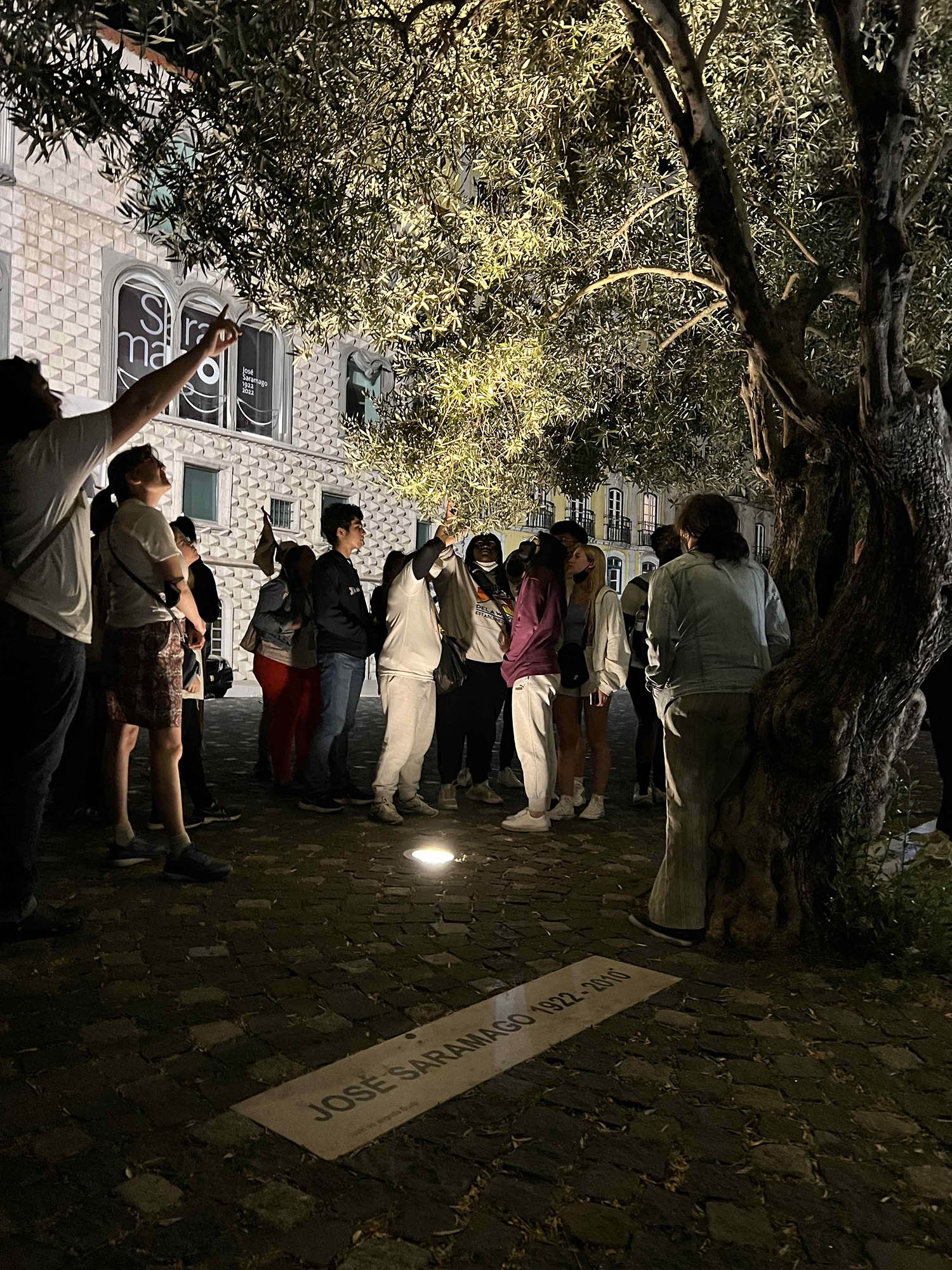Still riding high from our triumphant opening concert at Ruínas do Carmo, we bid farewell to Portugal and made the long drive to our first stop in Spain: Seville, the capital and largest city of the autonomous community of Andalusia.
Our first stop was a visit to the massive Cathedral of Saint Mary of the See, better known as Seville Cathedral. Competed in the early 16th century, it is the world’s largest Gothic cathedral and a UNESCO World Heritage Site. Despite the sizzling temperature, many of us couldn’t resist making the ascent to the top of its magnificent bell tower also known as La Giralda. Reflective of southern Spain long history under Muslim rule, the bell tower was actually once the minaret of a mosque that stood on the same site before it was repurposed and augmented, with the final touch – the rotating sculpture known as El Giraldillo – added to the top of the bell tower in 1568.
Joined by our VIP tour, we finished our long travel day with a special evening at Tablao el Renal, where many of Seville’s finest flamenco dancers have performed shows for over 40 years. While dining on an incredible array of traditional Andalusian tapas, we were treated to a fantastic flamenco show featuring virtuosic singing, guitar playing, and dancing, of course.
Day 4 brought us to the main destination of our tour: the beautiful city of Málaga, located on the Costa del Sol along the Mediterranean. After a quick visit to the beach for a little R&R, we went to meet our new friends from Orquesta Promusica and jump right into the much-anticipated rehearsals for our joint concert at the Castillo de Gibralfaro. Led by maestros Evan Ross Solomon and Javier Claudio, our YO students joined forces with over 40 young Spanish string players for an exciting rehearsal of works by Verdi, Offenbach, de Falla, and Turina. Despite any language barriers, the students all did an incredible job of communicating with one another to create musical fireworks in the rehearsal room. We cannot wait to perform together at the Castillo de Gibralfaro tomorrow night!


